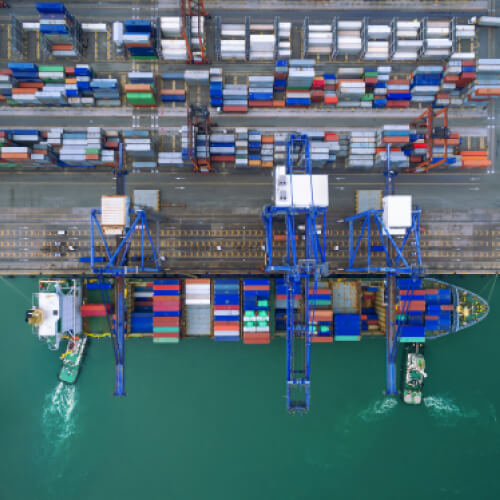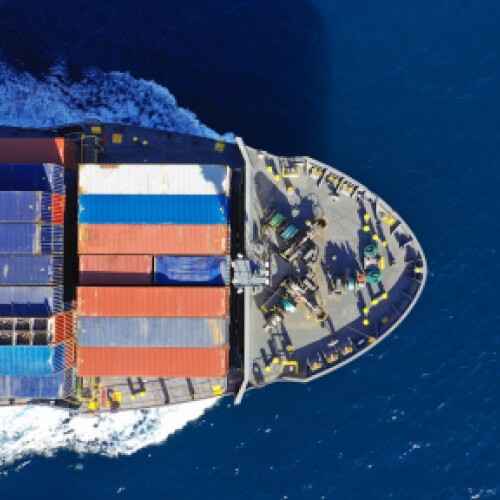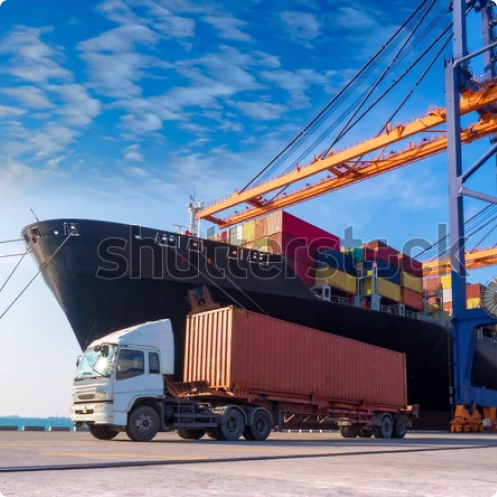On October 1, 2023, the European Union introduced a new import tax CBAM (Carbon Border Adjustment Mechanism), for goods imported from outside the EU. This initiative is part of the “Fit for 55“ package, designed with the goal of achieving the targets set by the “European Green Deal”, to reduce greenhouse gas emissions by 55% by 2030.
The main purpose of the CBAM is to combat the phenomenon of carbon leakage, i.e., to prevent goods imported from non-EU countries from enjoying a competitive advantage due to the absence of carbon costs in their countries of origin. But what are the implications of this new tax? Which sectors does it affect? And above all, how will it work? Let’s find out in this in-depth exploration of the topic by Savino Del Bene.
What is the CBAM?
Let’s first try to define the CBAM. The carbon tax is an environmental tax aimed at reducing CO2 (carbon dioxide) emissions and other greenhouse gases in the atmosphere. It is applied to every unit of carbon emitted and is generally calculated in tons of CO2 equivalent.
The fundamental principle of the carbon tax is to bring to light the so-called “hidden costs”, i.e., the environmental and social prejudices generated by the emission of greenhouse gases, which are usually not reflected in the prices of products and services. In other words, the carbon tax aims to economically disincentivize the use of polluting energy sources, and promote the transition to more ecological and sustainable technologies. This tax can be imposed at different levels in the energy chain: from extractors to distributors, to final consumers. To ensure that its impact is fair and well-distributed, the CBAM includes compensatory strategies, such as incentives for renewable energy or tax relief for companies that undertake eco-friendly practices and promote a circular economy.
CBAM regulation: the commodities involved
The CBAM applies to goods with high carbon intensity, requiring importers of certain items to purchase CBAM certificates to offset the emissions produced during their manufacturing process, thereby leading to increased import costs. This mandate to procure CBAM certificates will come into effect starting January 1, 2026. However, since October 1, 2023, importers of these CBAM-subject goods are already required to report accurately. The goods in question include: cement and cement products, electricity, mineral and chemical fertilizers, iron and steel products, aluminum products, hydrogen.
It also extends to semi-finished or finished items derived from these goods, such as; liquefied natural gas, gasoline, fuel oil, synthetic rubber, plastics, lubricants, antifreeze, fertilizers, and pesticides. The Harmonized System (HS) codes officially disclosed to the CBAM implementation regulation are:
- HS Chapter 25 – Cement: certain items of Headings 2507 and 2523;
- HS Chapter 27 – Electricity: electrical energy of HS 2716;
- HS Chapter 28 – Fertilizers and Hydrogen: certain items of Headings 2804, 2808, 2814, 2834, 3102, and 3105;
- HS Chapter 72 – Iron and Steel: except certain products of Heading 7202;
- HS Chapter 73 – Articles of Iron and Steel: certain items of Headings 7301, 7302, 7303, 7304, 7305, 7306, 7307, 7308, 7309, 7310, 7311, 7318, and 7326;
- HS Chapter 76 – Aluminum: certain items of Headings 7601, 7603, 7604, 7605, 7606, 7607, 7608, 7609, 7610, 7611, 7612, 7613, 7614, and 7616.
It is expected that in the future this list will be expanded.
How does the CBAM work?
The regulation governing the CBAM is: Regulation (EU) 2023/956 of the European Parliament and of the Council, published in the Official Journal of the European Union on May 16, 2023. Its implementation is expected to happen in two different phases: a transitional phase and a definitive phase.
The transitional phase of the CBAM
The CBAM transitional phase has officially begun, which only involves reporting obligations. The objective of this transitional period is to serve as learning period for all stakeholders and to collect useful information on embedded emissions to refine the methodology for the definitive period. CBAM goods importers (or their indirect customs representatives) are required to submit a quarterly report to the Commission, in which they must specify:
- The quantity of imported goods per customs procedure;
- Combined Nomenclature (CN) code of the goods;
- Country of origin;
- Details on where the goods were manufactured;
- Production methods and applied quality standards;
- For steel products: the ID of the relevant steel mill;
- Direct and indirect emissions related to imported goods (at both the product and facility level);
- The CO2 levy in the country of origin, with reference to the law governing this levy and the number of emissions covered by any free allocations, discounts, or other forms of compensation.
CBAM reports are subject to Commission control, and if there is incomplete data, additional information can be requested from the national authority. If the importer does not comply with these requests or does not fulfill all the obligations set by the regulation, they could be subjected to a sanctioning board. The European Commission itself has announced a 30-day extension for the first CBAM reporting, which is now scheduled for March 1, 2024. This exemption is granted to companies that have encountered technical issues when uploading data on the portal.
Implementing regulation and communication methodologies during the transitional phase
The Implementing Regulation on reporting obligations and methodology provides for some flexibility regarding the values used to calculate emissions in imports during the transitional phase. Until the end of 2024, companies have the option to choose three ways to report:
- Full reporting according to the new methodology (EU method);
- Reporting based on an equivalent method (internationally recognized certifications, bilateral or multilateral agreements, and specific methodologies related to individual sectors);
- Reporting based on predefined reference values (only until July 2024).
From 1 January 2025, only the EU method will be accepted and estimates (including default values) can only be used for complex goods if these estimates represent less than 20% of total integrated emissions. The Commission has also developed dedicated IT tools to help importers perform and communicate these calculations, as well as in-depth guidance, training materials and exercises to support businesses in this transition phase.
Savino Del Bene is prepared to assist importers by furnishing any necessary (customs) details needed to accurately fulfill this CBAM reporting. Importers should, however, acknowledge that a significant portion of the requisite information is solely held by these companies themselves and is not accessible to external parties.

The implementation phase of the CBAM
Starting from January 1, 2026, the CBAM regulation will become fully operational, with operators required to submit an actual CBAM declaration. This is a document that will act as an official account of the carbon emissions associated with imported goods. It must include:
- The total quantity of CBAM goods imported in the previous calendar year;
- The total CO2 emissions embodied in such goods;
- The total number of CBAM certificates returned (whose price will be calculated based on the average price of EU ETS allowances expressed in €/ton);
- A copy of the emission verification report issued by an accredited body.
If importers can demonstrate that a carbon price has already been paid during the production of the imported goods, the corresponding amount can be deducted. The first of these declarations must be submitted by May 31, 2027. This step represents a significant expansion of responsibilities, both for the involved operators and for the authorities: it will no longer be a data collection exercise, but a compliance issue with significant legal and financial implications.
CBAM declarants: status and obligations
Regarding the implementation phase, CBAM goods imports can only be carried out by so-called “CBAM declarants“. To obtain this status, each importer must send a request to the competent authority of their State. This will proceed within 15 days to carry out all the necessary checks, and eventually register the importer in the appropriate CBAM register.
Once authorized, the CBAM declarants will be obligated to:
- Calculate the amount of CO2 embodied in the imported CBAM goods and keep the information used for 4 years;
- Purchase, through a platform managed by the Commission, the already mentioned CBAM certificates necessary to offset the emissions embodied in the CBAM goods imported in the previous year;
- Return, by May 31 of each year, the certificates through the CBAM register;
- Submit, also by May 31 of each year, the CBAM declaration.
If an importer does not request the “CBAM declarant” status from the State, they will be out of compliance with the aforementioned CBAM Regulation (EU) 2023/956. Failing to comply with such provisions could expose the importer to penalties, as well as bureaucratic and administrative challenges that could hinder their business activity.
Conclusion
It is advisable to check whether your products are subject to CBAM regulation. For detailed calculation methods and necessary information, you can refer to the European Union website. Savino Del Bene understands that CBAM reporting is a very complex procedure. For this reason, with regard to international shipping services, we are available to assist your company in fulfilling these requirements. For further information, contact your local Savino Del Bene representative.






